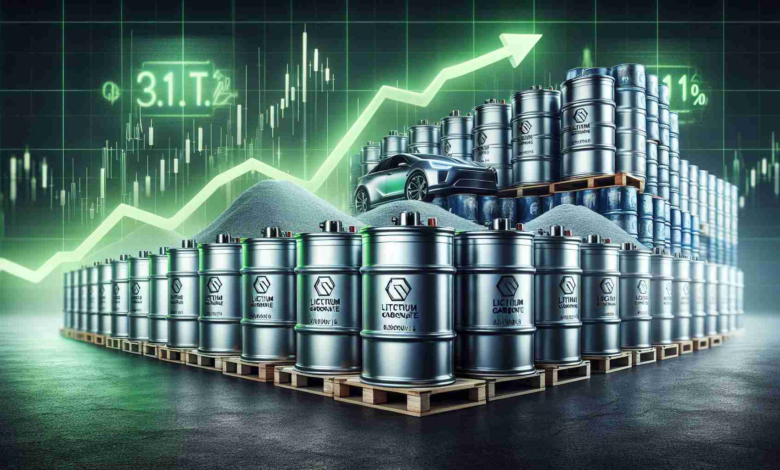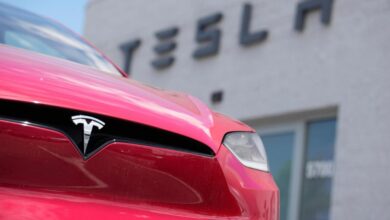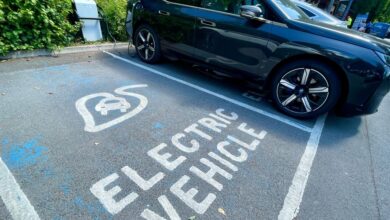Electric Vehicle Battery Market Gains Stability with Lithium Carbonate Price Recovery

Summary: The electric vehicle battery market in China is showing signs of price stabilization following recent fluctuations in lithium carbonate prices, a key component for batteries. A report by TrendForce highlights the steady pricing for EV batteries of different types after a notable rebound in lithium prices. The article provides insights into current market trends, anticipates raw material cost reductions, and projects future pricing behavior.
In recent developments within China’s bustling electric vehicle (EV) sector, there has been a revival of stability in battery market prices. Following fluctuations earlier this year, the industry welcomed March with a decisive increase in lithium carbonate costs, deemed essential for EV battery manufacturing. These raw material costs managed to eclipse CNY 100,000 per ton, signaling a robust step toward market steadiness.
Battery types such as square ternary, square LFP (lithium iron phosphate), and pouch-type ternary reportedly sustained average prices within competitive ranges, which are expected to persist. Although battery-grade lithium experienced a slight price drop as the month closed, the overall trend maintained a positive momentum with an impressive 14 percent escalation in average lithium prices throughout March.
On the flip side, the energy storage system (ESS) battery domain observed a more tepid demand, with prices slightly dipping due to an oversupply. The introduction of large-capacity ESS batteries exceeding 280 Ah may prompt a looming downward price trend owing to their cost-effective nature.
Participant optimism in the consumer battery arena has been bolstered by a 4 percent uptick in prices, spurring from the resurgence in metals like lithium and cobalt. Despite this, experts predict a stabilization of consumer battery prices going forward, with the potential for cost hikes being seemingly capped.
With an eye on the approaching quarters, TrendForce’s analysis suggests a conservative fluctuation margin for lithium prices in the EV battery market. Price reductions are anticipated as competition intensifies, with manufacturers vying to lower costs to under CNY 0.4/Wh for an improved market footprint.
The report concludes with an intriguing forecast for 2024, where raw lithium material prices could potentially reduce by half compared to early 2023, ultimately contributing to structured, sustained market stability. This potential shift, along with a corresponding decrease in higher-cost production capacities, could realign the supply-demand balance and stabilize future battery prices.
The electric vehicle (EV) battery market, particularly in China, has witnessed a recent return to price stabilization following earlier volatility, largely attributed to the fluctuating costs of lithium carbonate, a critical battery component. A study from TrendForce emphasized this steadiness across various EV battery types, marking an overall rebound in March for lithium prices.
Industry Overview
China’s EV industry is a global front runner, largely due to the country’s massive market size and government initiatives promoting electric mobility. With policies favoring EV adoption and an increased environmental consciousness among consumers, the demand for electric vehicles has soared, thus highlighting the significance of a stable and scalable battery supply chain. This industry is not only crucial for reducing carbon emissions but is also a major driver for innovations in energy storage technologies.
Market Forecasts
As the largest market for electric vehicles, China’s actions have a profound impact on global supply chains and pricing dynamics. The long-term outlook remains positive; industry analysts project continued growth in EV sales, which will propel the demand for batteries. Trends like the investment in solid-state batteries and other advanced technology could also influence market directions.
Looking ahead, an expected increase in the production of battery materials and improvements in technology could lead to a decrease in overall battery costs. Price stabilization, as hinted by TrendForce, will be key for ongoing investment and development in this sector. Furthermore, a reduction in the costs of lithium and other raw materials could potentially halve prices by 2024, increasing EV affordability and adoption.
Issues Related to the Industry
Despite the optimistic forecast, the battery industry faces several challenges. Supply chain reliability, raw material sourcing, and environmental implications of mining practices are ongoing concerns. Additionally, the recycling and disposal of EV batteries pose significant environmental challenges that the industry must address to ensure sustainability.
Moreover, there’s a need for advancements in battery technology to enhance energy density, reduce charging times, and improve safety. Balancing the expansion of production capacities with the demand, and averting potential oversupply, will also be crucial to maintain stable battery prices.
To track the latest developments and research on electric vehicle battery advancements and related market trends from reliable sources, visiting the official sites such as TrendForce can provide valuable insights.
In conclusion, while there are clear signs of stabilization and hopeful reductions in raw material costs, the EV battery market remains complex, influenced by various economic, technical, and environmental factors. A continuous balance will be necessary to navigate both the current period of stabilization and the anticipated growth on the horizon.

Natalia Toczkowska is a notable figure in digital health technology, recognized for her contributions in advancing telemedicine and healthcare apps. Her work focuses on developing innovative solutions to improve patient care and accessibility through technology. Toczkowska’s research and development in creating user-friendly, secure digital platforms have been instrumental in enhancing the effectiveness of remote medical consultations and patient monitoring. Her dedication to integrating technology in healthcare has not only improved patient outcomes but also streamlined healthcare processes, making her a key influencer in the field of digital health innovation.



